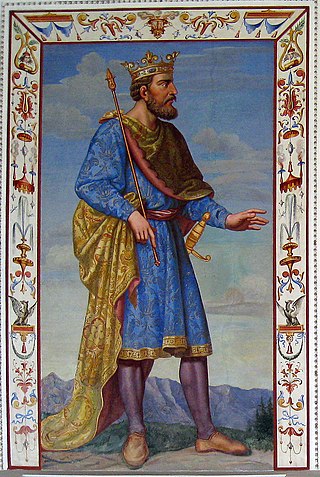
Henry of Gorizia, a member of the House of Gorizia, was Duke of Carinthia and Landgrave of Carniola and Count of Tyrol from 1295 until his death, as well as King of Bohemia, Margrave of Moravia and titular King of Poland in 1306 and again from 1307 until 1310. After his death, the Habsburgs took over Carinthia and Carniola and held them almost without interruption until 1918.

Albert III of Austria (9 September 1349 – 29 August 1395), known as Albert with the Braid (Pigtail) (German: Albrecht mit dem Zopf), a member of the House of Habsburg, was Duke of Austria from 1365 until his death.
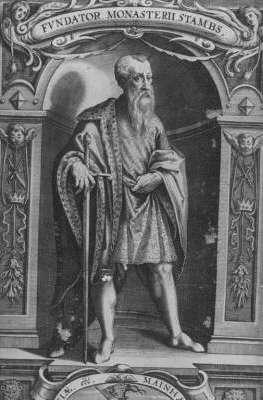
Meinhard II, a member of the House of Gorizia (Meinhardiner), ruled the County of Gorizia and the County of Tyrol together with his younger brother Albert from 1258. In 1271 they divided their heritage and Meinhard became sole ruler of Tyrol. In 1286 he was enfeoffed with the Duchy of Carinthia and the adjacent March of Carniola.

Albert I, a member of the House of Gorizia, ruled the counties of Gorizia (Görz) and Tyrol from 1258, jointly with his elder brother Meinhard IV. In 1271, the brothers divided their heritage and Albert became sole ruler of the Gorizia estates until his death. His descendants, known collectively as the Albertine line, ruled the County of Gorizia until the extinction of the House in 1500.
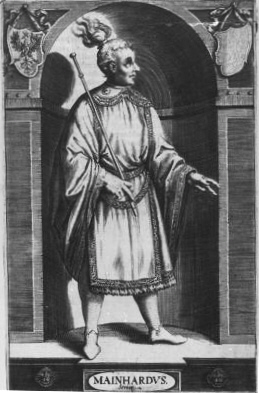
Meinhard I, a member of the House of Gorizia (Meinhardiner), was Count of Gorizia from 1231 and Count of Tyrol from 1253 until his death.

Louis V, called the Brandenburger, a member of the House of Wittelsbach, ruled as Margrave of Brandenburg from 1323 to 1351 and as Duke of Bavaria from 1347 until his death. From 1342 he also was co-ruling Count of Tyrol by his marriage with the Meinhardiner countess Margaret.
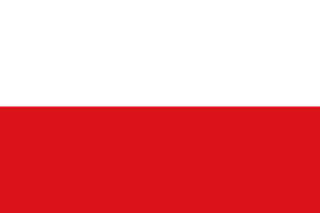
The (Princely) County of Tyrol was an estate of the Holy Roman Empire established about 1140. After 1253, it was ruled by the House of Gorizia and from 1363 by the House of Habsburg. In 1804, the County of Tyrol, unified with the secularised prince-bishoprics of Trent and Brixen, became a crown land of the Austrian Empire. From 1867, it was a Cisleithanian crown land of Austria-Hungary.

The County of Gorizia, from 1365 Princely County of Gorizia, was a State of the Holy Roman Empire. Originally mediate Vogts of the Patriarchs of Aquileia, the Counts of Gorizia (Meinhardiner) ruled over several fiefs in the area of Lienz and in the Friuli region of northeastern Italy with their residence at Gorizia (Görz).

The Counts of Gorizia, also known as the Meinhardiner, House of Meinhardin, were a comital, princely and ducal dynasty in the Holy Roman Empire. Named after Gorizia Castle in Gorizia, they were originally "advocates" (Vogts) in the Patriarchate of Aquileia who ruled the County of Gorizia (Görz) from the early 12th century until the year 1500. Staunch supporters of the Emperors against the papacy, they reached the height of their power in the aftermath of the battle of Marchfeld between the 1280s and 1310s, when they controlled most of contemporary Slovenia, western and south-western Austria and part of northeast Italy mostly as (princely) Counts of Gorizia and Tyrol, Landgraves of Savinja and Dukes of Carinthia and Carniola. After 1335, they began a steady decline until their territories shrunk back to the original County of Gorizia by the mid 1370s. Their remaining lands were inherited by the Habsburg ruler Maximilian I.

The March of Carniola was a southeastern frontier district of the Carolingian Empire, and a state of the Holy Roman Empire, centered in the region of Carniola. The region came under Carolingian influence in 788, being gradually organized as a county, that was originally placed under Friulian jurisdiction (828), but later transferred to East Francia and reorganized into a frontier march. In the middle of the 10th century, it was under the jurisdiction of the Duchy of Bavaria, but in 976 it was placed under the jurisdiction of the newly created Duchy of Carinthia. At the time of its creation, the march served as a frontier defense against the Kingdoms of Hungary and Croatia. The March of Carniola was later transformed into the Duchy of Carniola (1364).

The Counts of Ortenburg were a comital family in the mediaeval Duchy of Carinthia. Though they had roots in Bavarian nobility, an affiliation with the Imperial Counts of Ortenburg, a branch line of the Rhenish Franconian House of Sponheim, is not established.

Meinhard VI of Gorizia a member of the Meinhardiner dynasty, an imperial prince and a count of Gorizia.

Albert II, a member of the House of Gorizia, ruled as governor of the County of Gorizia from 1323, on behalf of his nephew Count John Henry IV. He inherited from his father only the lands in the Puster Valley.

John Henry IV of Gorizia (1322–1338) was a medieval Count of Gorizia and a member of the Meinhardiner dynasty. He was the only surviving son of Henry III and his wife Beatrix of Lower Bavaria, the daughter of Duke Stephen I. He succeeded his father as Count of Gorizia in 1323. Because he was still a minor, his mother and his uncles Albert II of Gorizia and later Henry of Carinthia acted as regents. After 1329, the custody was taken over by his cousin Albert III. Since he died young, he never actually reigned himself. Nevertheless, in 1332, aged nine, he was elected as podesta of Trieste, in the city's attempt to forge an alliance with Gorizia against Venetian expansion.
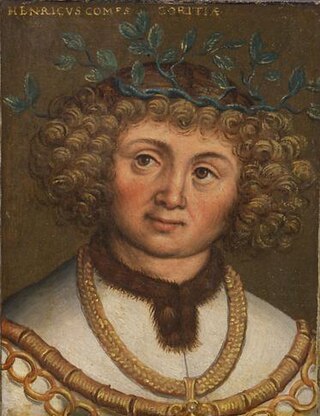
Henry VI (1376–1454), a member of the House of Gorizia, ruled as Count of Gorizia from 1385 until his death. He was also Count Palatine of Carinthia, governor of Belluno-Feltre and Landeshauptmann of Carniola. Through his first marriage with Elizabeth of Cilli, he was the brother-in-law of Sigismund of Luxembourg, Holy Roman Emperor and King of Hungary.

Henry V, Count of Gorizia was a Count of Gorizia from the Meinhardiner dynasty.

Henry III, Count of Gorizia was a member of the Meinhardiner dynasty.
Engelbert III, Count of Gorizia was a member of the Meinhardiner dynasty. He ruled the County of Gorizia from 1191 until his death.

Engelbert II, a member of the House of Gorizia, was Count of Gorizia (Görz) from 1150 until his death. At the end of his life, he also held the title of a Margrave of Istria, a Count palatine in the Duchy of Carinthia and Vogt (Reeve) of the Patriarchate of Aquileia.

Meinhard I, an ancestor of the noble House of Gorizia, was a Count of Gorizia in the first half of the 12th century. He also held the offices of a Count palatine in the Duchy of Carinthia as well as Vogt governor of the Patriarchate of Aquileia and of St Peter Abbey in the March of Istria.













